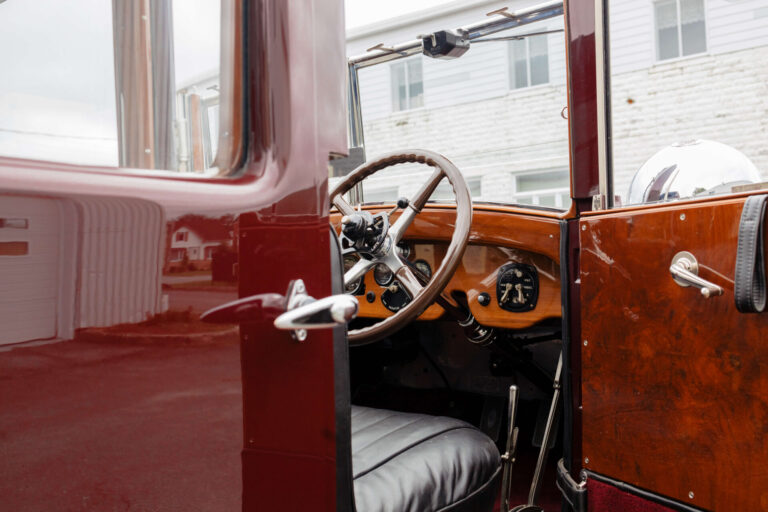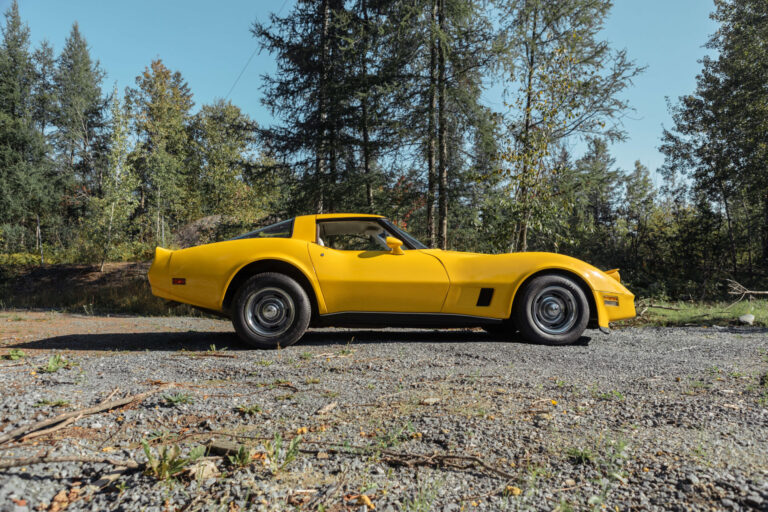The Automotive Dream “One man and his dream had not simply left the world with an engine and four wheels; Henry Ford and his Model T had influenced people's everyday lives - where they lived, how they spent their leisure time, even how they viewed themselves.” - Gary...
Rolls-Royce Phantom I 1928
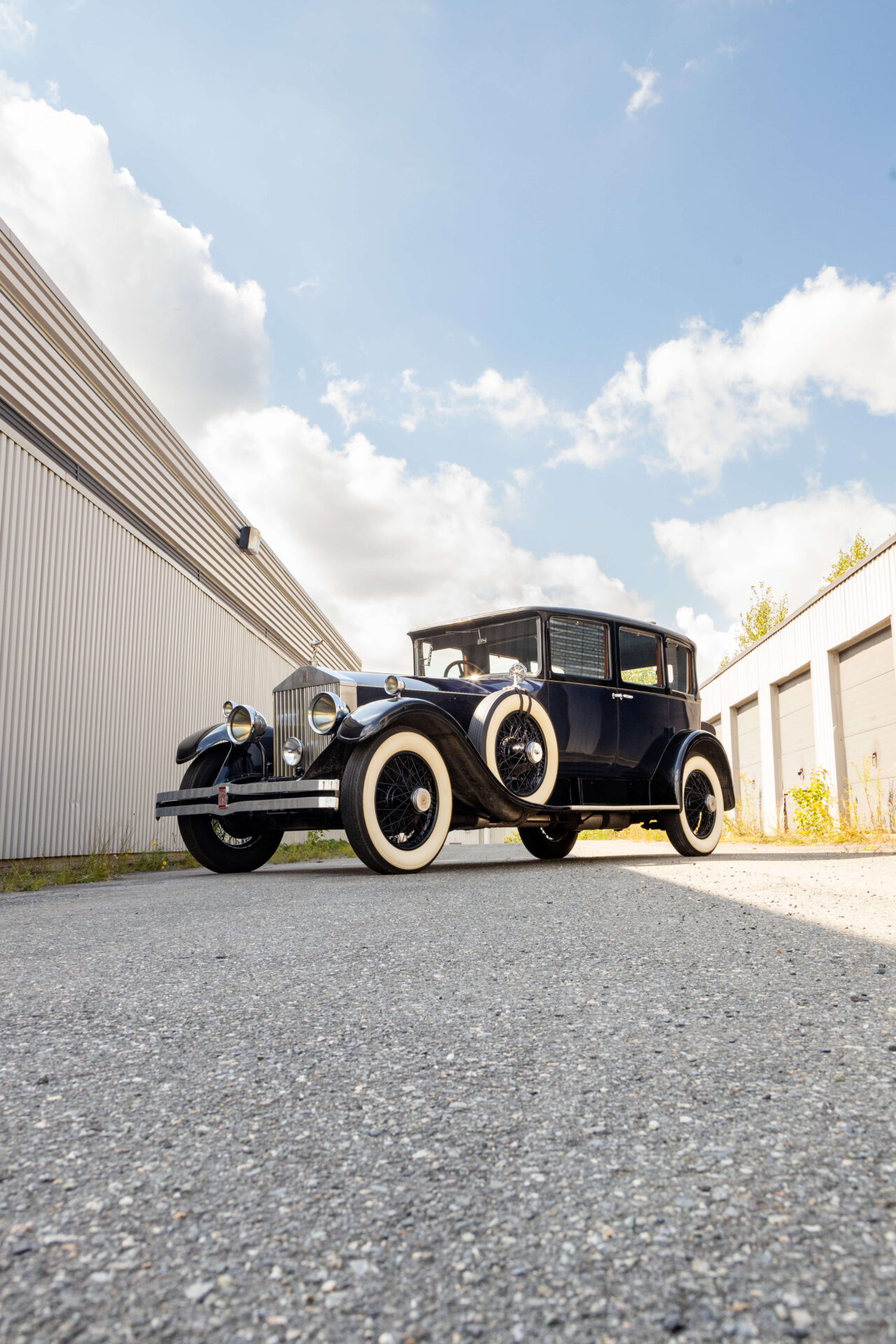
Photo credit - Good Vision Prod
Recent posts
Lagonda 16/80 Special Six 1933
English Touring The car we present to you this week is the Lagonda 16/80 Special Six in the Demers Car Collection. Lagonda was a luxury British car brand that Aston Martin eventually absorbed. Through its association with Aston Martin, it is sometimes hard to remember...
An Introduction to Lagonda
Before Aston Martin “The history of Lagonda cars is synonymous with sophistication, opulence, and groundbreaking performance” - An article for Discovery UK Today, we may recognize the name Lagonda from its association with Aston Martin. Before these two brands...
Cadillac Model A 1903
The Standard of the World “No other American car on the market in the first decade of the century was constructed to higher standards than Cadillac.” - Stephen W. Sears in The Automobile in America Some of you may know that Cadillac has long had the slogan “Standard...
A Car Fit for Royalty
“Like having an elderly elephant in the garage, a Phantom I is to be loved for what it is rather than what it isn’t.” – Andrew English for Hagerty
The Demers Car Collection holds many Rolls-Royces and we’ve already discussed one of them on the blog before. Rolls-Royce is a prestigious brand and its cars have truly withstood the test of time. To this day, Rolls-Royces are great displays of craftsmanship. Owners of these cars often cherished them, which allowed a great number of them to survive to this day. The one we discuss in this week’s article is yet another Phantom I. Keep reading to learn more about this particular car and its coachbuilder.
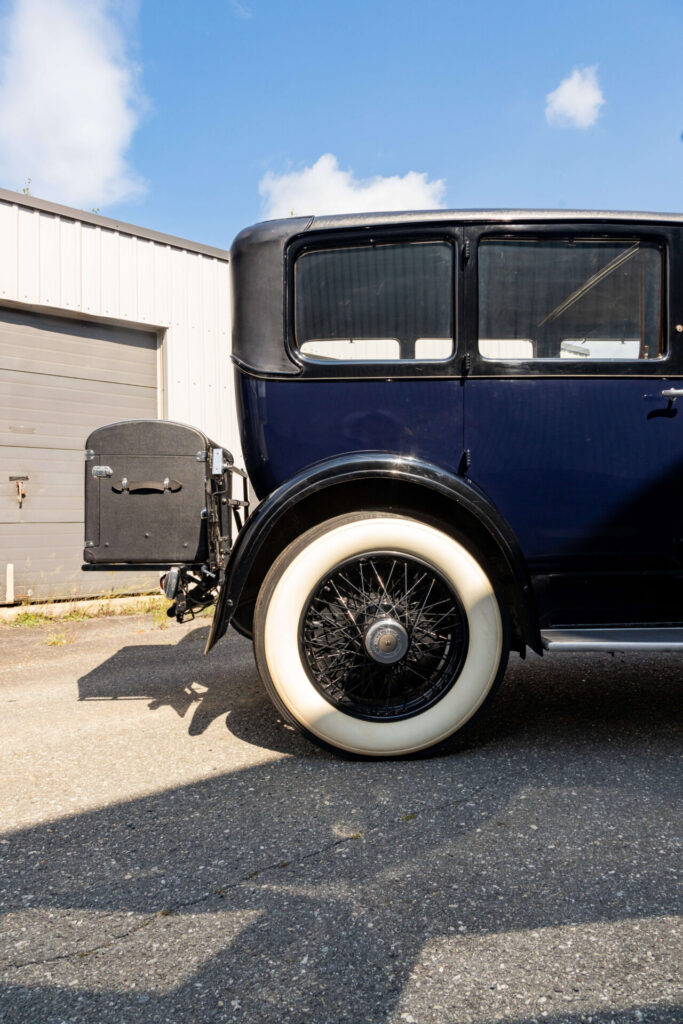
The Context
Rolls-Royce’s first car, the Silver Ghost, earned them their reputation as “the best car in the world.” When it appeared in 1906, the quality of its engineering and the quietness of its engine amazed everyone and justified its price tag. Rolls-Royce quickly built on this reputation to become the choice maker of luxury cars for wealthy clients. The early 1900s was a period of rapid change and evolution in the automotive industry. By the time the 1920s rolled around, after two decades of the Silver Ghost, despite Rolls-Royce’s stellar reputation, the brand was due for a new model.
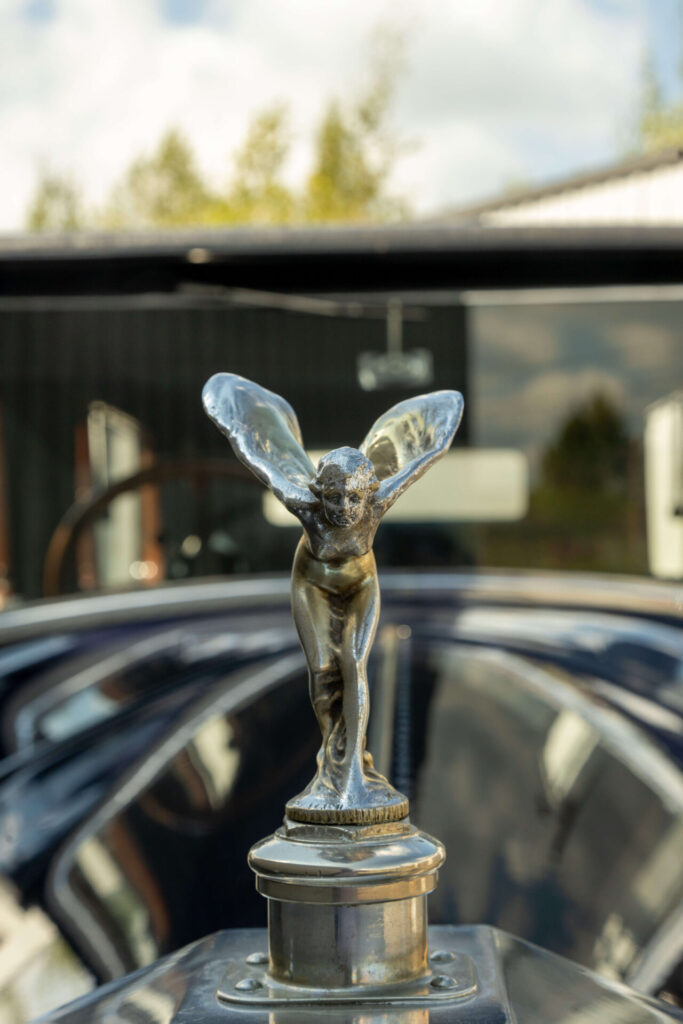
The New Phantom
In 1925, Rolls-Royce introduced a new car with a new name: the New Phantom. Today, we know it as the Phantom I, as many more versions of the famous car came after. The particular one you see here was made in Derby, in the United Kingdom in 1928. This is important to specify as the English brand also had manufacturing facilities in Springfield in the United States at the time.
Although it was a new model, it bore many similarities to its predecessor and was distinctively Rolls-Royce. To this day, tradition is extremely important for the British brand. Predictably, the new model carried on the legacy Rolls-Royce established with the Silver Ghost. The Phantom I was made following the coachbuilding tradition in which buyers purchased chassis and coaches separately. The one you see here is one of about 2258 produced between 1925 and 1931 when the model was replaced by the Phantom II. The chassis alone weighed about 4000 lbs or about 1814 kg.
A mighty six-cylinder engine that was capable of moving all that weight, plus the coach and its passengers at a respectable speed powered the Phantom I. For various reasons, Rolls-Royce never advertised the power of its engines. Rolls-Royce’s clients tended to be conservative folks for whom prestige was more important than speed. For the New Phantom though, the engine was completely new, with notable increases in displacement and power. Estimates place its capacity at about 100 hp.
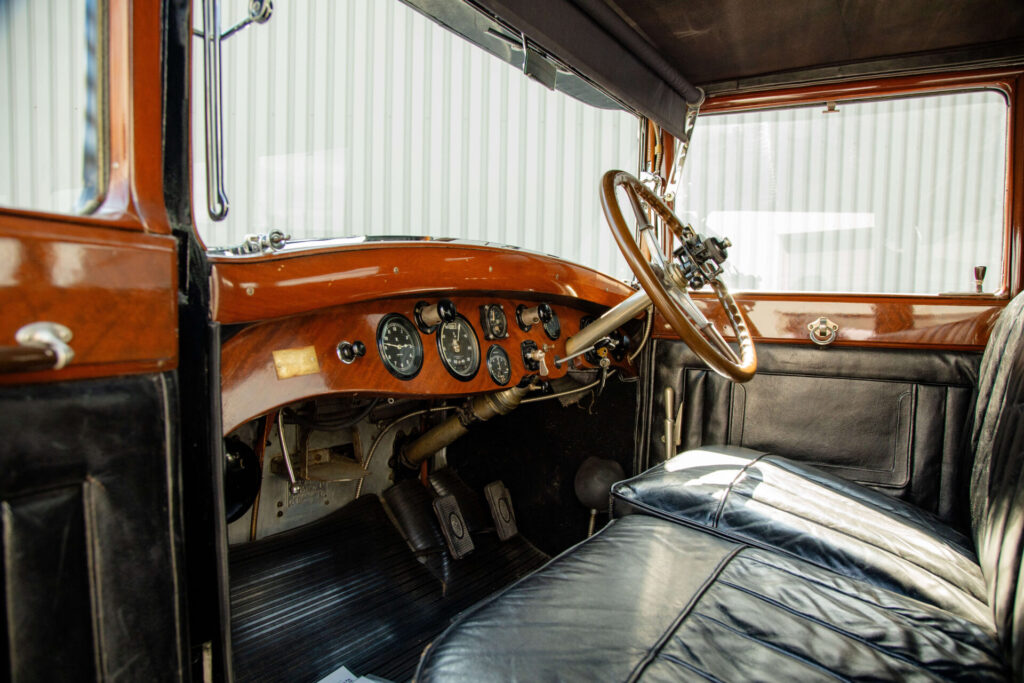
About This Car’s Ownership
According to documents found in the car that were put together by a previous owner, we believe to have a good idea of the previous owners of this particular car. We believe that the original buyer was a woman from California who purchased the car in 1928, but quickly changed her mind. The car was instead delivered to the residence of a British Army Captain in London. A later owner is believed to have ties to the Bulgarian royal family. The car made its way to the United States in this period. The car then found its way to Quebec, Canada in 1957 and had two other owners before becoming part of the Demers Car Collection.
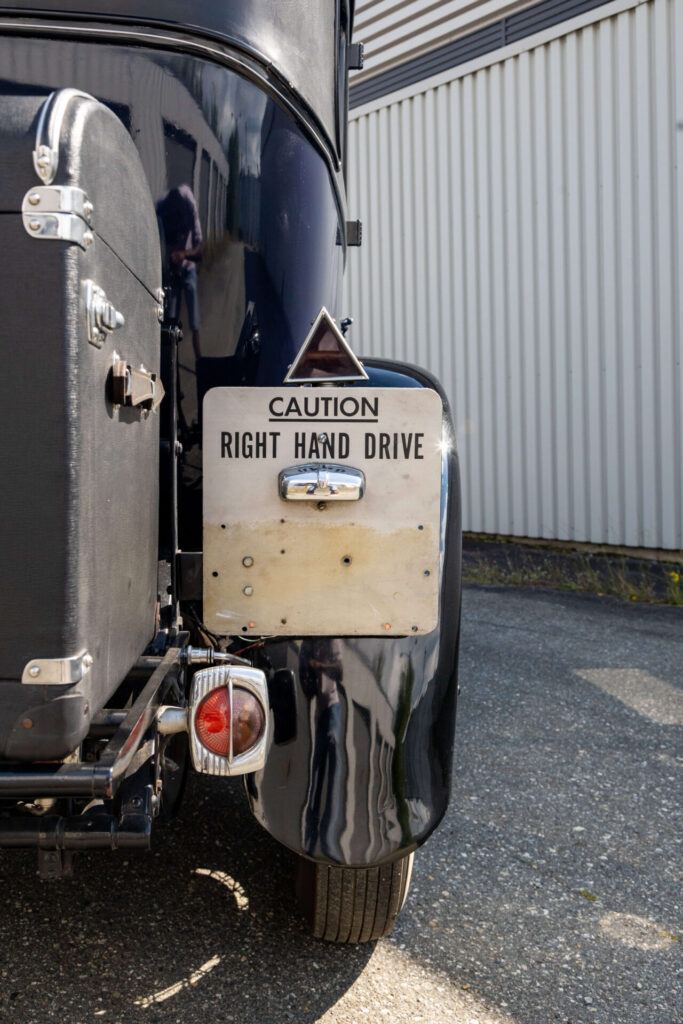
Coachbuilt
Although coachbuilders had to respect Rolls-Royce design rules, every coachbuilt car had the potential to be unique as it reflected the preferences of the buyer. This is also why it is difficult to evaluate the performance of such a car. Coaches could add up to 2000 lbs or about 907 kg to the weight of the chassis and differed in terms of aerodynamics. So, cars from the same make and model offered different performances depending on the coach.
Rolls-Royces have always been traditional, conservative cars. Especially in the 1920s, their design clung to tradition. A Rolls-Royce buyer could choose from a variety of reputable coachbuilders to finish their car. For the Phantom I, the same coachbuilders that did the Silver Ghosts dressed essentially what was the same chassis resulting in cars that were quite similar in looks. This particular car is a four-door sedan made by H. J. Mulliner & Co. of London and is a good example of that tradition. No bright color or swooping lines here! Nevertheless, it is still a car that deserves to be admired. Because, for all that sobriety, it is done with exceptional attention to detail and quality. The dashboard is made of mahogany wood and the back seats truly resemble a living room. Every design element of the exterior and the interior is exactly right, looks solid, a true lasting classic look.
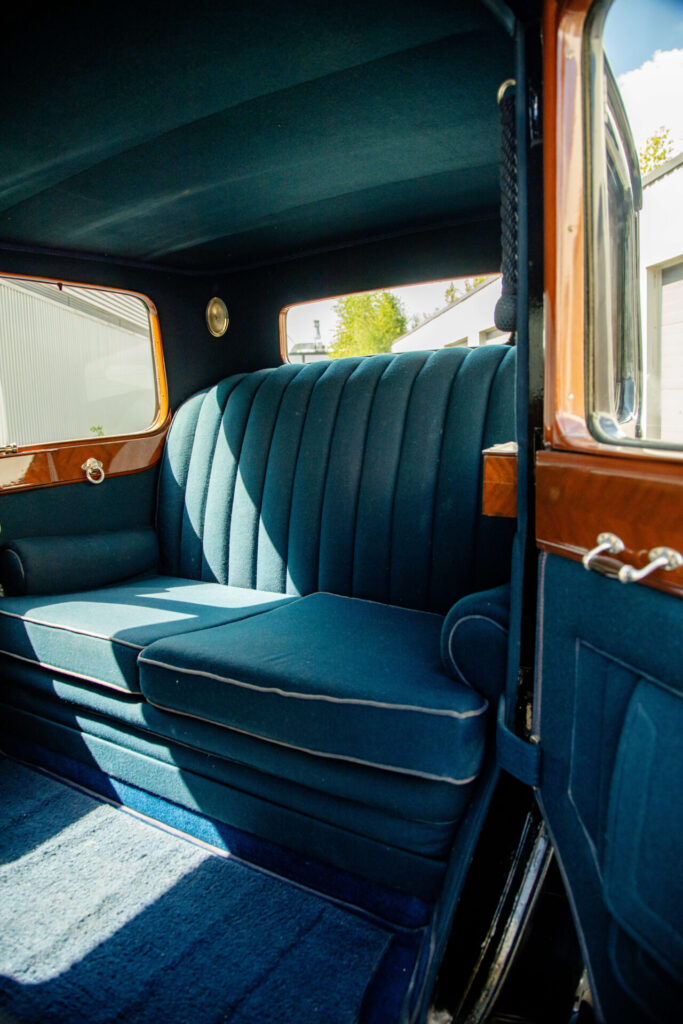
H. J. Mulliner & Co
Like Rolls-Royce, the Mulliner name is synonymous with history and tradition. Building on a heritage that dates back to 1559 the H. J. Mulliner & Co opened its doors in London at the turn of the 19th century. First making hand-built horse carriages for London’s elite, they pivoted to automobiles in the 20th century. Like other coachbuilders that serviced Rolls-Royce, Mulliner was a leader in the field and also made cars for Bentley. The association with the latter was so important that Mulliner eventually merged with Bentley, which was under the Roll-Royce wing by then. The division is still in business today.
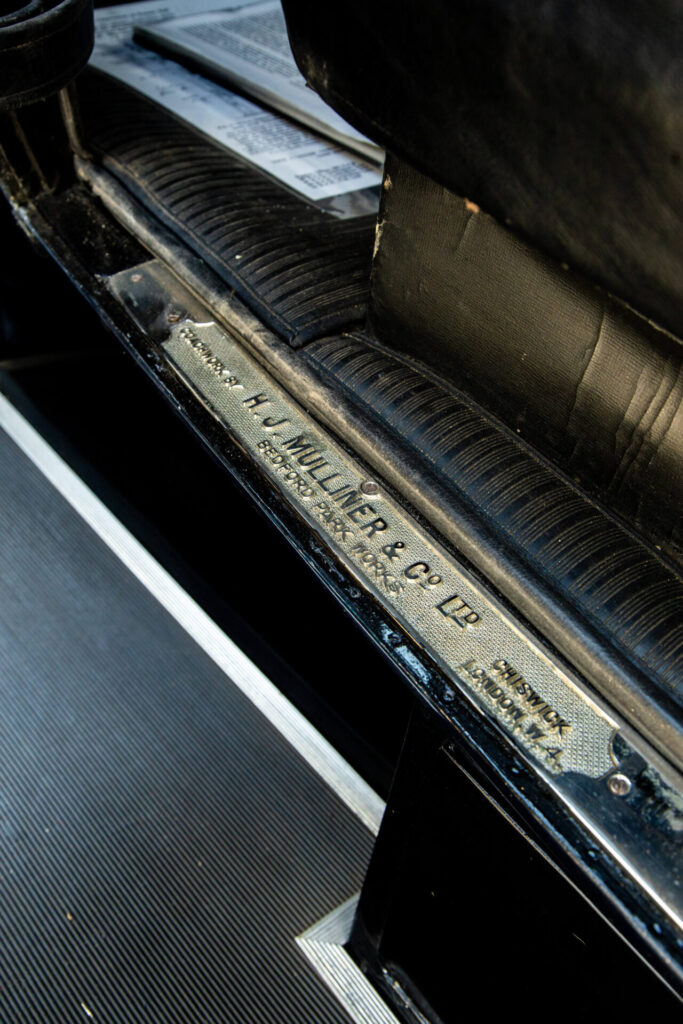
What Now?
The Phantom I was very short-lived compared to its predecessor. In the UK, it was discontinued within four years in favor of the Phantom II, which came with a fully re-engineered chassis. Actually, it is the shortest-lived Rolls-Royce in history! This makes the one in the Demers Car Collection quite special and worthy of note.
Next week, we remain in the realm of the prestigious, this time on the French side. Don’t miss next week’s article where we introduce you to Louis Delage, the founder of one of the most well-respected French classic car brands.
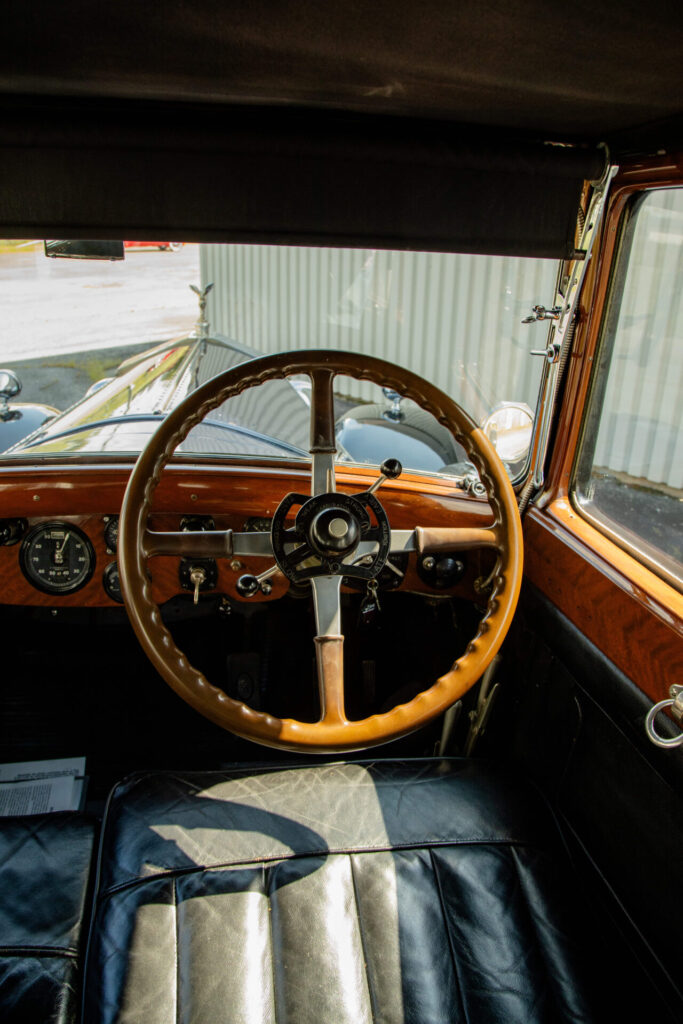
The Nitty Gritty
- 4-speed gearbox
- Rear-wheel drive
- 150.5 in or about 382 cm wheelbase
- 7 668 cu in, 6-cylinder engine
- Dual ignition with magneto and coil
- Estimated max speed: 80 mph or about 128 km/h
- Four-wheel servo brakes
- Semi-elliptic front suspension
- Cantilever rear suspension
- 100 hp (estimate)


